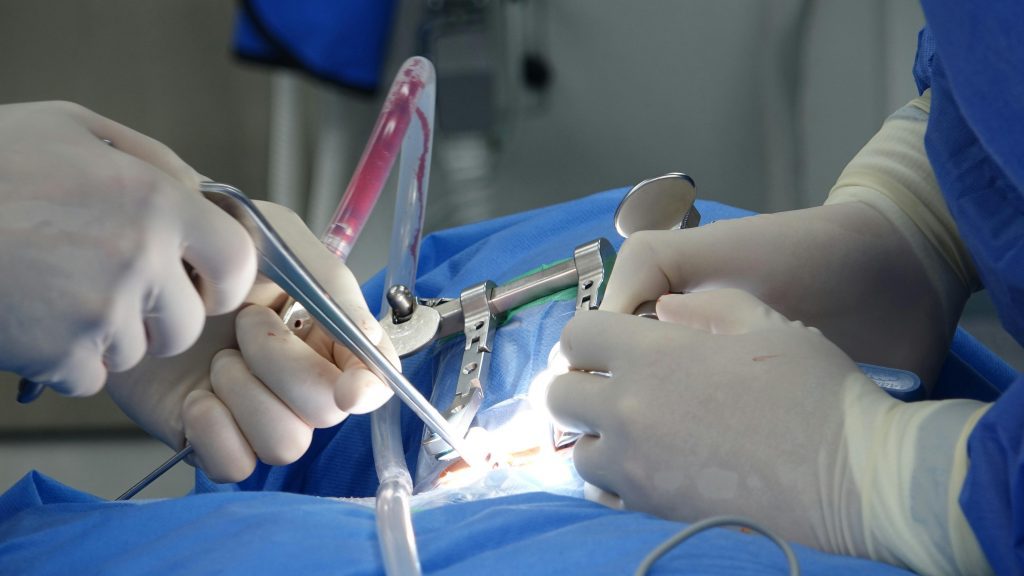Neck pain can impact work, sleep, and daily routines. When conservative treatments fail, cervical disc fusion surgery may be an effective option. This procedure helps reduce pain, stabilize the spine, and restore function.
What Is It?
Cervical disc fusion is a surgical procedure that addresses problems in the neck portion of the spine. The cervical spine consists of seven vertebrae located in the neck. Between each vertebra is a disc that acts as a cushion. Over time, these discs can become damaged due to injury, wear, or disease.
In this surgery, the damaged disc is removed. A bone graft or synthetic device is placed in its place. The goal is for the vertebrae to fuse together over time. This fusion eliminates movement at that segment, relieving pain and improving stability.
Why It’s Done
The surgery is often performed when there is a herniated or bulging disc pressing on a nerve. It can also be used to treat degenerative disc disease. Spinal instability, deformities, and trauma are other common reasons.
Many patients seek surgery after months of unsuccessful non-surgical treatments. These may include physical therapy, medications, and injections. Persistent symptoms like neck pain, arm weakness, or tingling may signal the need for surgery.
In some cases, the pressure on spinal nerves becomes severe. This can lead to significant loss of function. Surgery helps by removing the source of compression.
The Procedure
The surgery is done under general anesthesia. It usually takes between one to three hours. The surgeon makes a small incision in the front of the neck. This anterior approach allows better access to the cervical spine.
After reaching the spine, the surgeon removes the damaged disc. A bone graft or implant is inserted in the disc space. This spacer restores height and helps support the spine.
A metal plate with screws may also be attached. This helps keep the vertebrae stable during healing. The incision is then closed, and the patient is taken to recovery.
Recovery Process
Recovery varies for each person. Many patients go home within a day or two. Others may stay longer if multiple levels are fused. Light activities can begin within a few weeks.
Most patients wear a neck brace for support during healing. This helps limit motion and encourages fusion. Activities that strain the neck should be avoided.
Physical therapy is often part of the recovery plan. It begins a few weeks after surgery. Therapy focuses on strengthening the neck and improving movement.
Pain is managed through medication and ice therapy. As healing continues, patients can return to normal routines. Full fusion may take several months.
Possible Risks
All surgeries carry risks. Cervical disc fusion is generally safe, but complications can happen. Infection and bleeding are rare but possible.
There’s also a risk of nerve injury. Some patients may not achieve full fusion. This condition is called non-union or pseudoarthrosis. If that happens, further treatment may be required.
Another potential issue is adjacent segment disease. This occurs when discs above or below the fusion wear down over time. Choosing an experienced surgeon helps minimize these risks.
Long-Term Benefits
Most patients experience significant relief after surgery. Neck pain, arm weakness, and nerve symptoms often improve. Many return to work and daily activities within months.
Some people worry about losing neck motion. However, most do not notice a major difference. The fused segment stops moving, but surrounding areas adapt.
When combined with therapy and good posture habits, the results are long-lasting. Patients are encouraged to stay active, avoid smoking, and maintain a healthy weight.
Choosing a Provider
Finding a skilled surgeon is key to success. Look for a team with experience in spine surgery and a focus on personalized care. Multidisciplinary clinics often offer better outcomes.
Some practices, like South Nassau Orthopedic Surgery and Sports Medicine, P.C, provide a range of treatments beyond surgery. These may include diagnostics, rehabilitation, and patient education. A comprehensive approach can improve healing and overall satisfaction.
Cervical disc fusion surgery is a reliable solution for serious neck issues. When non-surgical care no longer helps, this procedure can restore comfort and mobility.
Understanding the process helps you make informed decisions. With the right team and a clear recovery plan, long-term relief is possible. If you’re struggling with neck pain that won’t go away, consider speaking with a spine specialist to explore your options.


